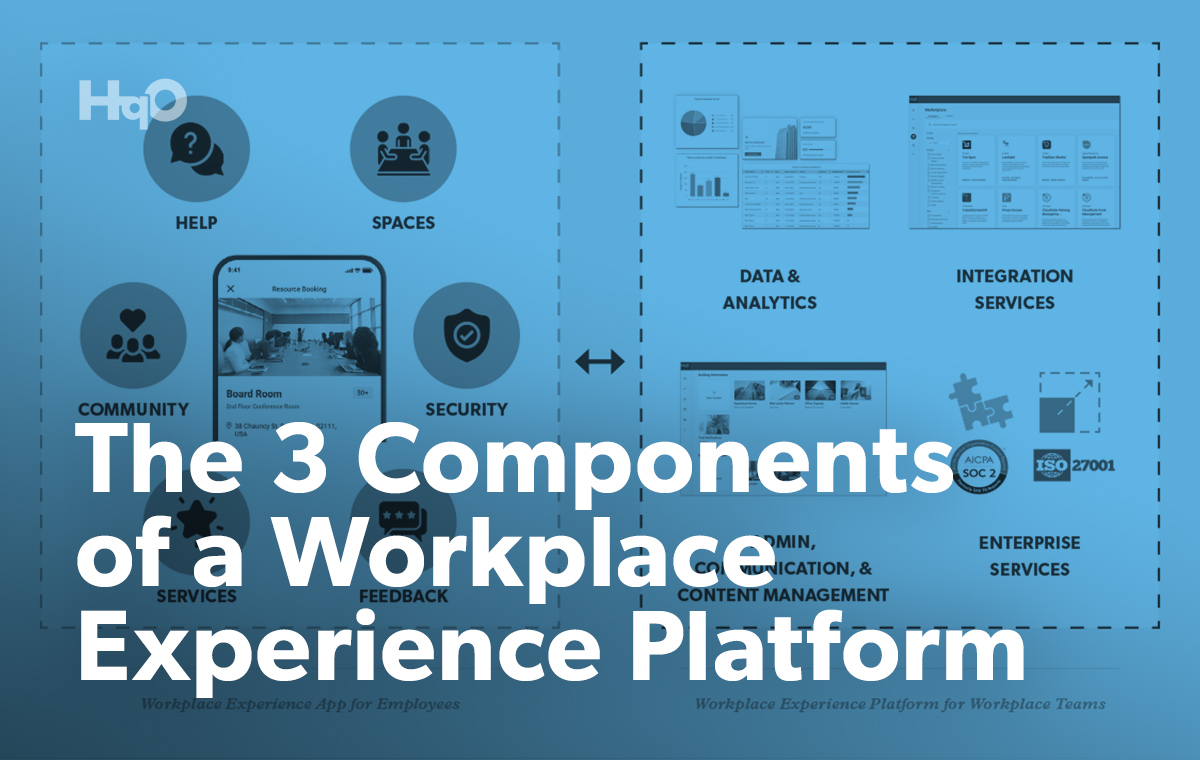With workplace experience platforms taking center stage, you may be asking yourself “What features should every workplace experience platform have?”
In general, workplace experience platforms are the most comprehensive when they include three main features: a scalable and secure employee app, workplace modules, and a platform that integrate with the systems you already have. Below, we cover each of these components in more detail.
1. An Employee App
Every employee is unique, which is why having personalized app experiences that can be branded for your workplace and tailored to your specific needs are so important. With an app, you can give your employees a “remote control” to access both physical and digital resources. Each visit to your app should be an opportunity for employees to manage their workplace experience and discover other resources they can benefit from. This will help make them more efficient and productive, especially if your provider gives you integration options with your back-end systems. You’ll work smarter too, by managing more of the workplace experience through a single administration console and accessing meaningful workplace analytics.
2. Workplace Modules
To get the most out of your app, your employees should also be able to use and control workplace modules that are available through a mobile or web interface. We’ve identified six categories of importance for any workplace:
- Help: This will enable employees to submit maintenance and other requests from one interface, so they can get issues resolved faster without the usual back and forth.
- Services: Make sure to provide convenience and fitness services, so employees can stay healthy without having to leave the office.
- Community: Your technology should be used to further create a sense of connection in the workplace.
- Feedback: You will want to provide employees with an easy way to share their sentiment, priorities, and feedback on an ongoing basis.
- Spaces: You can take the friction out of desk, conference room, parking, and other resource reservations with tools to manage in-office space usage.
- Security: You will need to keep spaces secure while providing a welcoming environment, through features such as mobile access control and visitor management.
At the end of the day, your employee app should be able to bring these capabilities together into a single pane of glass, to make it easy for employees to do what they need to do to get their jobs done.
3. An End-to-End Platform
Both your app and modules should be an extension of a comprehensive workplace experience platform, which should include a few features of its own:
- Admin: Having an administrative interface will let you create targeted programs, without assistance or custom coding. It should include everything you need to create, promote, get registrants for, and measure the success of your programs. Additionally, an Audience feature — like the one in the HqO platform — can allow you to target the right groups of people by department or interest group.
- Insights and Analytics: To keep on top of what’s happening on an ongoing basis, you’ll need access to analytics. This will provide insights so you can optimize your operating and real estate investments, which is especially important in today’s rapidly changing environment.
- Marketplace: Being able to leverage a technology marketplace with pre-built integrations will enable you to to use the technology investments you have already made, while also discovering new best-fit options for your workplace.
- General Platform Services: Additionally, every platform should offer security and scalability to grow with your business. For example, the HqO platform is ISO, SOC-2, GDPR, and PIPEDA compliant — meaning we take security measures seriously and will make sure that all your information is safe.
Additionally, to ensure the best results, workplace experience technology buyers must validate three key points about the platform they are deliberating: 1) that potential providers can actually deliver on what they are promising, 2) that the provider’s technology infrastructure is designed to scale, adapt, and continuously add value as you and your employees’ needs inevitably evolve, and 3) that the provider’s capabilities actually match the needs of your workforce (such as mobile access, resource booking, digital programming, food or convenience services, and so on).
Want to learn more about workplace experience technology that delivers business success? Download our latest guide here.



